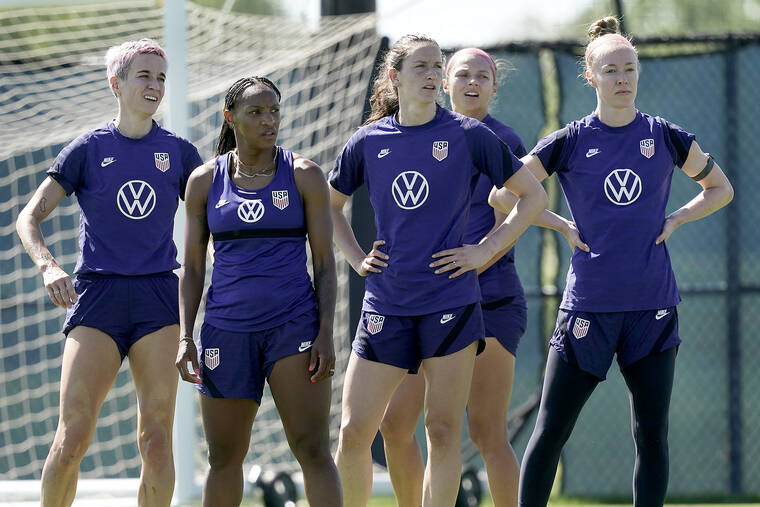US women’s soccer tries to overcome past lack of diversity
PORTLAND, Ore. — Crystal Dunn was often the only Black girl on her youth soccer clubs, and even when she finally made it to the national team, she did her own hair and makeup for photo shoots because “there wasn’t someone set up for me.”
While the U.S. national team has steadily become more representative, Dunn says there’s still work to be done. That starts with making sure young women of color feel included all the way down to the youth level.
ADVERTISING
“I had very supportive parents who explained to me that, ‘This is OK, you are still welcome in this sport. And just because there aren’t many people that look like you, this is still your game,’” Dunn said. That support was key to her success “because honestly at the end of the day, it’s pretty lonely to feel like you’re the only one in this space and to not feel as if you belong.”
Women’s soccer in the United States has long had a diversity problem: The sport’s pay-to-play model means that it’s expensive, especially at higher levels. Club teams and traveling teams can cost thousands of dollars in some cases. Almost from the start, players without financial resources — including many from marginalized communities — are left behind.
Even U.S. Soccer President Cindy Parlow Cone has lamented that American soccer is seen as a “rich, white kids’ sport.”
Dunn first played for the national team in 2013 and was on the squad that won the 2019 World Cup in France. The job also involved off-field duties such as participating in professional photo shoots and public appearances.
Such events often included hair and makeup assistance for white players, but with no guarantee that the stylists would know how to work with Black skin or Black hair.
“Those are things that a lot of people didn’t ever have to think about because there weren’t that many of us,” Dunn said.
She was among just five players of color out of 23 on the roster for the World Cup-winning team. In contrast, France had 12.
The most recent U.S. roster had 10 women of color — including young stars Trinity Rodman, Naomi Girma and Mallory (Pugh) Swanson — as the team readies for this summer’s World Cup. The United States will face New Zealand twice next week as the teams ramp up for the tournament, which will be co-hosted by Australia and New Zealand.
“Representation matters,” said Sophia Smith, who had a team-high 11 goals for the United States last year and won U.S. Soccer’s Female Player of the Year award. “And I think for young girls to be able to look on the screen or come to a game and see a lot of people that look different, it’s great.”
The growing representation has helped diversify a team that included fewer than a dozen total Black players in its entire history before 2012.
The pool of players talented enough to each the highest level in America — the national team and the National Women’s Soccer League — is already small. The exclusionary nature of youth soccer makes it even smaller.
The pay-to-play structure “does leave a lot of marginalized minority communities in a pickle” because of the high costs, Dunn said. “And if I didn’t have parents who could dish out three, four or five grand a year, I don’t know that I can sit here and say that I would have continued playing this sport.”
Parlow Cone said at a youth sports panel last year that the U.S. federation is studying access to the game.
“A lot of it comes down to how our sport is viewed, marketing, and how do we shift that thinking from that it’s a rich white kids’ sport to this is a sport that is literally played in every country around the world?” she said. “And as the most diverse country in the world here in the U.S., how do we change that focus to making sure that every kid feels welcomed into our game?”





